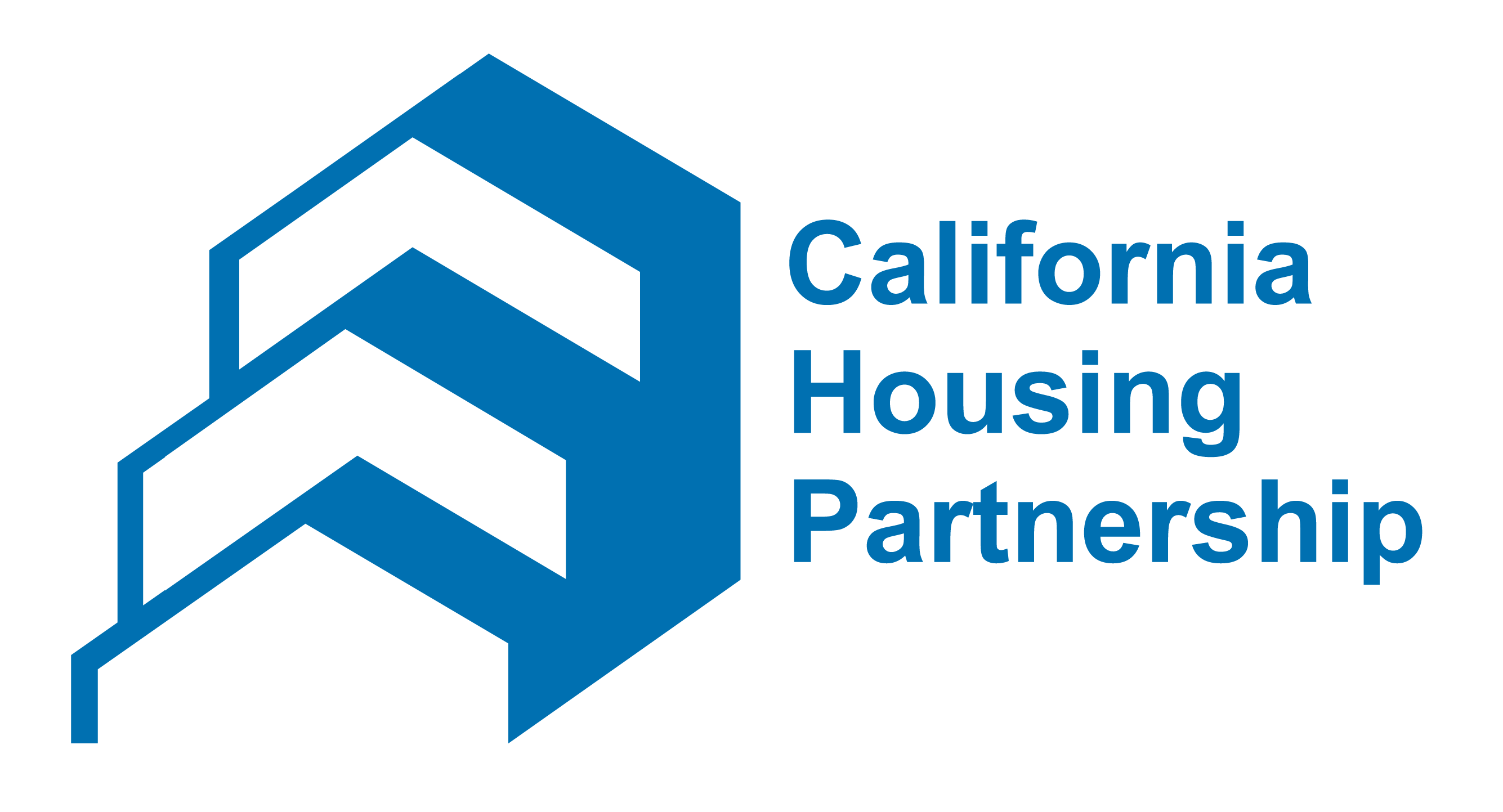The California Housing Partnership continues to engage with public agencies and electric utilities to ensure that multifamily affordable housing properties have the necessary resources to meet ongoing energy, water and climate requirements. This digest highlights funding opportunities and shares program and policy updates.
PROGRAMS
Funding for Energy Efficiency, Solar and Energy Storage
CPUC’s Solar on Multifamily Affordable Housing Program (SOMAH)
California Housing Partnership is helping to implement the California Public Utilities Commission’s new SOMAH program that will be funded at up to $100 million per year for 10 years, depending on cap and trade proceed levels. It is limited to multifamily affordable housing properties served by Pacific Gas & Electric, Southern California Edison, San Diego Gas & Electric, Liberty, PacifiCorp, and Community Choice Aggregators that have Virtual Net Energy Metering tariffs. The program Handbook and timeline are available on the CalSOMAH website. Launch date is not confirmed but likely to be in January 2019. CHPC will announce a webinar on the application process for January once the launch date is confirmed. Contact Blanca de la Cruz: bdelacruz@chpc.net.
CSD’s Low-Income Weatherization Program (LIWP)
California Housing Partnership provides outreach and intake services for the California Department of Community Services and Development’s LIWP program which is accepting interest forms and currently targeting energy efficiency and solar improvements at farmworker housing. Projects must be completed by February 2020. Contact Blanca de La Cruz: bdelacruz@chpc.net.
CPUC’s Self-Generation Incentive Program (SGIP) Equity Budget
SGIP Equity Budget incentivizes energy storage systems at low-income properties that are installed on the customer’s side of the utility meter. Incentives are available through 2024 but limited to customers in Pacific Gas & Electric, Southern California Edison, Southern California Gas Company and San Diego Gas & Electric service territories. SGIP has previously collected $166 million annually, so the 25 percent Equity Budget could yield up to $41.5 million per year. Contact Stephanie Wang: swang@chpc.net.
Building Initiative for Low-Emissions Development (BUILD) Program – expected 2020

Governor Brown signed SB 1477 which will create a low-carbon buildings incentive program ($25-$50M per year) for technologies like heat pumps and solar thermal that help new buildings reduce greenhouse gas emissions. It will not include incentives for solar PV. BUILD is limited to new properties located in Pacific Gas & Electric, Southern California Edison, Southern California Gas Company and San Diego Gas & Electric service territories and will include a 30 percent set-aside with higher incentives and technical assistance for new affordable housing properties. Contact Stephanie Wang: swang@chpc.net.
CPUC’s Energy Savings Assistance Program for Common Area Measures (ESA CAM)
The new Energy Savings Assistance Program for Common Area Measures is expected to launch late 2018 or early 2019. Pacific Gas & Electric and San Diego Gas & Electric are identifying interested properties and verifying eligibility. Pacific Gas & Electric, San Diego Gas & Electric, and Southern California Edison may begin with pilot programs and focus on several self-selected properties. Contact Srinidhi Sampath Kumar: ssampath@chpc.net.
LADWP’s Energy Efficiency Programs
The Los Angeles Department of Water and Power (LADWP) recently launched several attic insulation programs including a $100 million rebate program. California Housing Partnership is developing an owner sign-on letter to reaffirm LADWP’s commitment to invest $100 million over five years in energy efficiency programs for low-income multifamily customers. Comments will focus on providing no-cost technical assistance, expanding the Home Energy Improvement Program and supporting Low-Income Weatherization Program projects. Contact Blanca de La Cruz: bdelacruz@chpc.net.
POLICIES
Building Code
The California Energy Commission’s new energy efficiency standards and solar requirements will impact all new construction and rehab projects beginning January 1, 2020. All residential properties (low-rise and high-rise) must be “solar-ready” unless they install a solar PV system. Low-rise properties (three or fewer stories) must install a solar PV system but have access to various exceptions and offsets. California Housing Partnership’s fact sheet summarizes the solar-ready and solar PV requirements, exception and offsets. Contact Stephanie Wang: swang@chpc.net.
Electric Vehicles
California has set a goal of reaching 5 million zero-emission vehicles by 2030 and 250,000 vehicle charging stations by 2025. The state is now moving forward with increasing code requirements for electric vehicle parking spaces. California Housing Partnership is working with allies to increase access to electric vehicle charging resources for affordable housing. For more information about electric vehicle opportunities and funding sources, please see the California Housing Partnership’s GREEN Talk summary. Contact Stephanie Wang: swang@chpc.net.
Time of Use Electricity Rates
California Housing Partnership’s blog 5 Things Affordable Housing Property Owners should know about Default TOU Electricity Rates outlines key dates, trends and strategies for multifamily affordable housing property owners to consider before their tenants are moved to new electricity rates in 2019 and 2020. Contact Stephanie Wang: swang@chpc.net.
Energy Data Access and Reporting
Properties with 50,000 or more square feet gross floor area, and 17 or more residential utility accounts, must request data from utilities by March 1, 2019 and report data to the California Energy Commission (CEC) by June 1, 2019. Properties subject to local benchmarking and reporting requirements may not have to report to the state as long as they comply with local requirements. Buildings with less than five residential units may be able to access aggregate data if they are served by one common meter (ie. outdoor lighting). For more information, please see the CEC’s Fact Sheet and FAQ Handout.
Water Conservation
 Governor Brown approved two water bills on May 31, 2018 to set new indoor residential water use standards (AB 1668) and regional water use efficiency targets (SB 606), but neither bill provides incentives for water-saving building improvements. As a local water provider, the San Francisco Public Utilities Commission has diverse program offerings that can help multifamily affordable housing property owners and low-income renters reduce water use and bills – see California Housing Partnership’s fact sheet. For more information about water conservation best practices, please see the California Housing Partnership’s GREEN Talk summary. Contact Stephanie Wang: swang@chpc.net.
Governor Brown approved two water bills on May 31, 2018 to set new indoor residential water use standards (AB 1668) and regional water use efficiency targets (SB 606), but neither bill provides incentives for water-saving building improvements. As a local water provider, the San Francisco Public Utilities Commission has diverse program offerings that can help multifamily affordable housing property owners and low-income renters reduce water use and bills – see California Housing Partnership’s fact sheet. For more information about water conservation best practices, please see the California Housing Partnership’s GREEN Talk summary. Contact Stephanie Wang: swang@chpc.net.
ABOUT GREEN
In recognition of the key role that energy and water costs play in the long-term financial feasibility of operating affordable housing, the California Housing Partnership has convened the Green Rental Home Energy Efficiency Network (GREEN) since 2010 to collaboratively increase access to energy efficiency, solar and water conservation resources for low-income renters and affordable housing properties. GREEN includes more than 50 nonprofit and government housing organizations active throughout California with extensive experience with financing, installing and maintaining clean and efficient energy systems in their multifamily affordable residential properties. Please contact Stephanie Wang at swang@chpc.net for more information about how to engage with GREEN.
